

Easter is late again this year! Do you ever wonder how the date is decided? Well, let me tell you what I found with a little research.

Unlike Christmas, the date of Easter Sunday changes every year and can fall anytime between March 22nd and April 25th. Why is this you ask?
Because Easter Sunday is decided by complex calculations based on the moon. Early on in Christianity different churches used different methods. This led to disagreements that still exist today in some cultures.
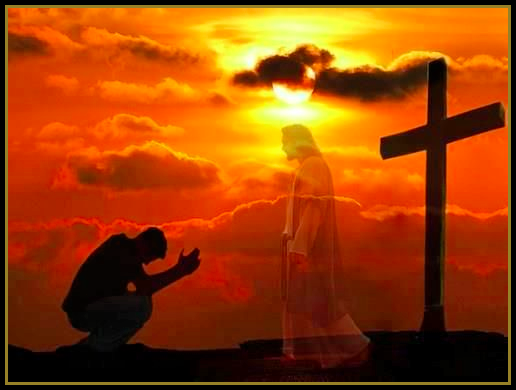
Easter celebrates the death and resurrection of Jesus which according to the Bible happened around the same time as Jewish Passover. Passover typically begins the night of the first FULL moon AFTER the spring equinox (usually March 20th or 21st) EXCEPT in months when it is the SECOND full moon. This most recently occurred in 2016. The FULL moon can vary in each time zone so the Church calculates Easter from the 14th day of the ecclesiastic lunar month which is known as the paschal full moon. Easter is the Sunday that follows the paschal full moon that falls on or after the equinox so can be from 1-7 days later. This year Passover and Easter fall on the same weekend with Passover coinciding with Good Friday.
In 1818 the full moon fell on the equinox, Saturday March 21, so Easter was the next day, March 22. Easter will not be this early again until the year 2285. The earliest recent Easter was March 23 in 2008. In 1943 a full moon fell on March 20, just before the equinox, so the paschal full moon was the next one on April 18 which was a Sunday so Easter was seven days later on April 25. It will not be this late again until 2038. The latest recent Easter was April 23 in the year 2000.
This year Good Friday was April 15th and today is Easter Sunday. You can find a table for upcoming Easter Sundays here.

Here is a fun Easter egg recipe.
Using ordinary materials (vinegar, food coloring and whipping cream) you probably already have on hand to decorate gorgeous Easter eggs is so easy and fun too! You will want to wear gloves so as not to dye your fingers.

TIE-DYE EASTER EGGS
INGREDIENTS
Bowl of Vinegar
Whipped cream
Food coloring
Hard-boiled eggs
NOTE: This can be done substituting shaving cream for whipped cream, but then they are for decoration only and NOT edible!!
And just for your information here is a great little color chart for other methods.
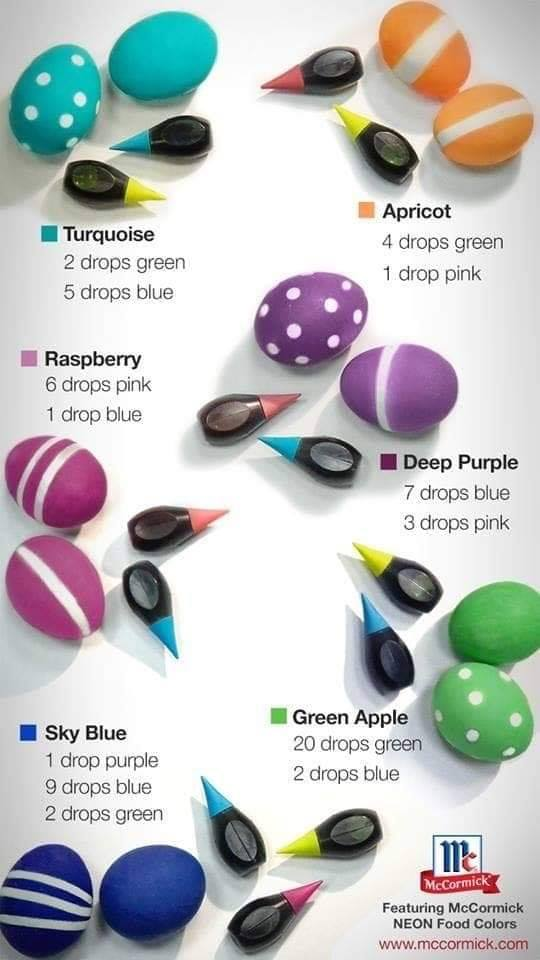

PASTEL DEVILED EGGS
This recipe is making the rounds these days and is absolutely perfect for the late Easter this year. These colored deviled eggs will make a beautiful addition to any Easter table! Also fun to do for baby or wedding showers as well.
EGGS
12 LARGE eggs
FILLING
1/2 cup mayonnaise
2 teaspoons pickle juice
2 teaspoons QUALITY mustard
4 tablespoons FINELY chopped dill pickles
FRESH ground sea salt and pepper (to taste)
DYE
6-8 ounces water in a cup
1 teaspoon white vinegar
GEL Food coloring

I don’t know about you, but I have been watching A LOT of television during this pandemic lock down. Or at least I have had it on to keep me company. I had a Hallmark movie on the other day while I was cutting quilt pieces and they mentioned a cookie that I had all but forgotten about and can’t even remember the last time I made. So, I dug out the recipe and made a batch for Easter. I hope you are enjoying your Easter as best as you can and enjoy these cookies too.

SNICKERDOODLE THUMBPRINTS yield: 4 dozen
2¼ cups all-purpose flour
1 teaspoon cream of tartar
½ teaspoon baking powder
½ teaspoon baking soda
½ teaspoon salt
1 cup unsalted butter, softened
1⅔ cups sugar, divided
2 egg yolks
1 teaspoon PURE vanilla extract
1+ 1 teaspoon QUALITY ground cinnamon
1 cup prepared apple butter
Easter is going to be late this year! Do you ever wonder how the date is decided? Well, let me tell you what I found with a little research.

Unlike Christmas, the date of Easter Sunday changes every year and can fall anytime between March 22nd and April 25th. Why is this you ask?
Because Easter Sunday is decided by complex calculations based on the moon. Early on in Christianity different churches used different methods. This led to disagreements that still exist today in some cultures.

Easter celebrates the death and resurrection of Jesus which according to the Bible happened around the same time as Jewish Passover. Passover typically begins the night of the first FULL moon AFTER the spring equinox (usually March 20th or 21st) EXCEPT in months when it is the SECOND full moon. This most recently occurred in 2016. The FULL moon can vary in each time zone so the Church calculates Easter from the 14th day of the ecclesiastic lunar month which is known as the paschal full moon. Easter is the Sunday that follows the paschal full moon that falls on or after the equinox so can be from 1-7 days later.
In 1818 the full moon fell on the equinox, Saturday March 21, so Easter was the next day, March 22. Easter will not be this early again until the year 2285. The earliest recent Easter was March 23 in 2008. In 1943 a full moon fell on March 20, just before the equinox, so the paschal full moon was the next one on April 18 which was a Sunday so Easter was seven days later on April 25. It will not be this late again until 2038. The latest recent Easter was April 23 in the year 2000.
This year Good Friday will be April 19th and Easter Sunday will be April 21st. You can find a table for upcoming Easter Sundays here.

Using ordinary materials (vinegar, food coloring and whipping cream) you probably already have on hand to decorate gorgeous Easter eggs is so easy and fun too! You will want to wear gloves so as not to dye your fingers.

TIE-DYE EASTER EGGS
INGREDIENTS
Bowl of Vinegar
Whipped cream
Food coloring
Hard-boiled eggs
NOTE: This can be done substituting shaving cream for whipped cream, but then they are for decoration only and NOT edible!!
And just for your information here is a great little color chart for other methods.

So we changed our mind and stayed home for Easter dinner. We decided it’s just too busy around here and we didn’t want to fight the crowds. Fortunately, we decided on Wednesday night so I was able to shop on Thursday and NOT fight the crowds in the markets.
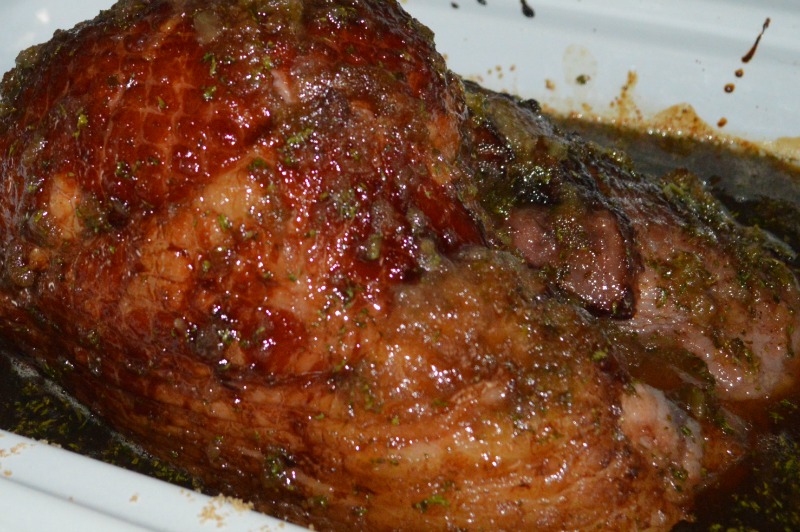
PINEAPPLE CARROT TOP BROWN SUGAR GLAZED HAM
1 spiral sliced ham 8-10 pounds
1 jar pineapple preserves
1/2 cup minced carrot tops
2 cups brown sugar
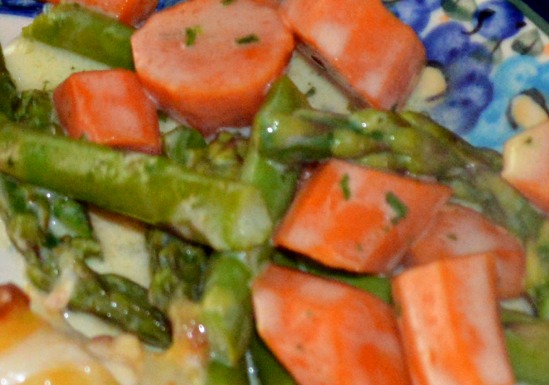
ROASTED CARROTS AND ASPARAGUS with BERNAISE SAUCE
3 large carrots, sliced thinly and diagonally
3-4 stalks asparagus, per person, trimmed and cut into pieces
2 tablespoons butter
salt and pepper, to taste
1 batch Bernaise sauce
BERNAISE SAUCE
1 tablespoon plus 1 cup (2 sticks) unsalted butter, cut into 1/2″ cubes
3 tablespoons minced shallots
Kosher salt and freshly ground black pepper
2 tablespoons Champagne vinegar or white wine vinegar
2 large egg yolks
Juice of 1 large fresh lemon
1 tablespoon finely chopped fresh tarragon
DO AHEAD: Can be made 1 hour ahead. Cover and let stand at room temperature. I prefer fresh if your time allows.
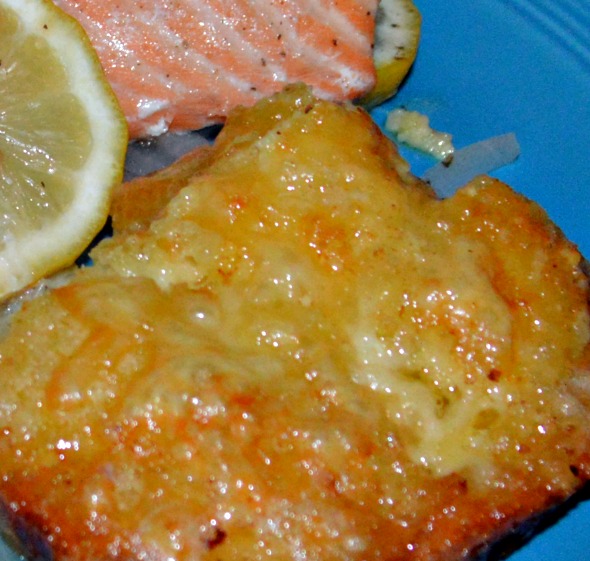
POTATOES AU GRATIN
1/2 cup butter
16 oz. whipping cream
5 large russet potatoes
1 teaspoon salt
1/2 teaspoon paprika
1/2 teaspoon Dijon mustard
1/2 teaspoon white pepper
1 teaspoon minced garlic (jar) or 1 clove
2 cups grated 4 white cheese mix (Gruyere, Muenster, etc…)
2 cups rates sharp cheddar
Wondra Flour
I developed this recipe for a request from our youngest and it quickly became a family favorite.
Dessert was a recent inspiration from a new restaurant. Tony Mandola’s Gulf Coast Kitchen is a fantastic place. We had the BEST waiter who made our meal so enjoyable while he treated us to dessert and the history of two restaurant families (Carrabas Italian Grill and Ninfas Mexican Cantina) melding together to create this restaurant. I couldn’t find a recipe so I kind of made it up as I went and came VERY close.
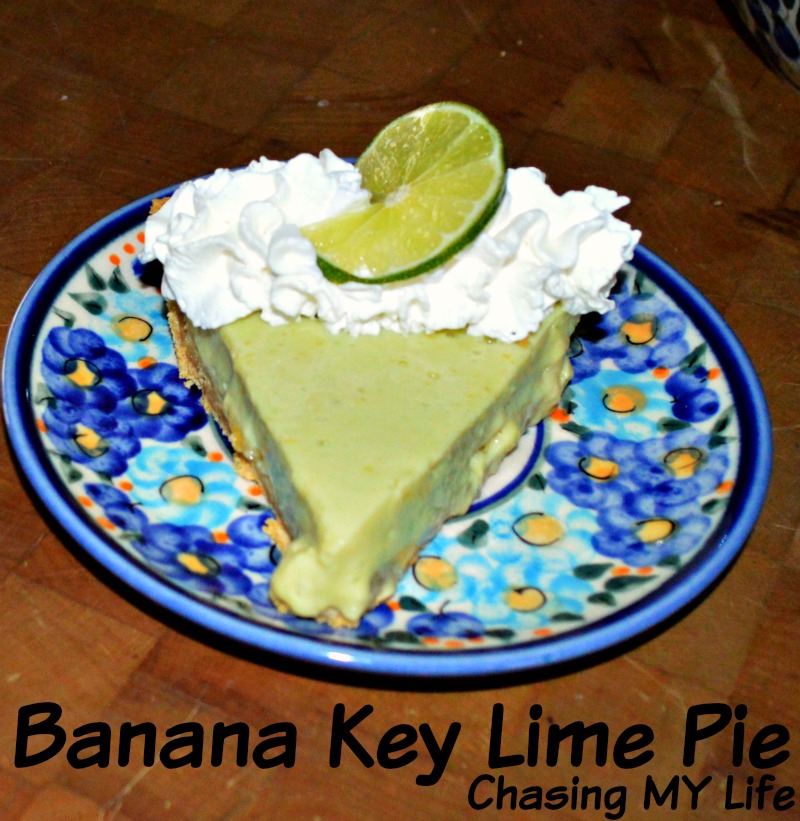
BANANA KEY LIME PIE
1 large firm banana, sliced thin
1/4 cup Malibu rum
1 graham cracker crumb crust
14 ounce can Eagle sweetened condensed milk
3 egg yolks + 2 tablespoons sugar
1/2 cup Key Lime Juice
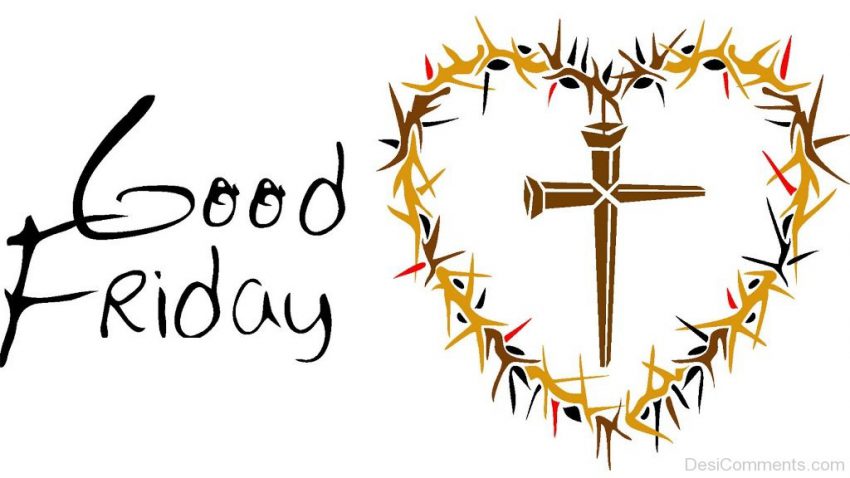 Good Friday is a Christian holiday commemorating the crucifixion of Jesus Christ and his death at Calvary and is observed during Holy Week on the Friday preceding Easter Sunday. It may coincide with the Jewish observance of Passover. It is also known as Holy Friday, Great Friday, Black Friday or Easter Friday.
Good Friday is a Christian holiday commemorating the crucifixion of Jesus Christ and his death at Calvary and is observed during Holy Week on the Friday preceding Easter Sunday. It may coincide with the Jewish observance of Passover. It is also known as Holy Friday, Great Friday, Black Friday or Easter Friday.
While Easter is a legal holiday, the date of the holiday on the Gregorian calendar varies from one year to the next, and there is quite a bit of disagreement about its calculation. Some countries even have laws prohibiting certain acts, such as dancing and horse racing, that are seen as profaning the solemn nature of the day.
Good Friday for Christians is a crucial day of the year because it celebrates what we believe to be the most momentous weekend in the history of the world, commemorating a day of suffering and death for Jesus. Christians have proclaimed the cross and resurrection of Jesus to be the decisive turning point for all creation. On Good Friday we remember the day Jesus willingly suffered and died by crucifixion as the ultimate sacrifice for our sins. Good Friday is followed by Easter Sunday which is the glorious celebration of the day Jesus rose from the dead.
Good Friday marks the day when God’s wrath and mercy met at the cross. That’s why Good Friday is so dark and so Good.
So Mardi Gras ends Tuesday and I thought this would be a good time to run this recipe for Mardis Gras King Cake. I threw in some history for you also since King Cake isn’t just for Mardi Gras though that is what it is most famous for these days. I do have to admit I made this cake a few years back when we were living in Texas during Mardi Gras season though since then I have made it for Epiphany without the Mardi Gras colors and using traditional Christmas colors.

A king cake (sometimes rendered as kingcake, kings’ cake, king’s cake, or three kings cake) is a type of cake associated with the festival of Epiphany in the Christmas season in a number of countries, and in other places with Mardi Gras and Carnival.
The “king cake” takes its name from the biblical three kings. Catholic tradition states that their journey to Bethlehem took twelve days (the Twelve Days of Christmas), and that they arrived to honor the Christ Child on Epiphany. The season for king cake extends from the end of the Twelve Days of Christmas (Twelfth Night and Epiphany Day), through to Mardi Gras day. Some organizations or groups of friends may have “king cake parties” every week through the Carnival season.
Related culinary traditions are the tortell of Catalonia, the gâteau des Rois in Provence or the galette des Rois in the northern half of France, and the Greek and Cypriot vasilopita. The galette des Rois is made with puff pastry and frangipane (while the gâteau des Rois is made with brioche and candied fruits). A little bean was traditionally hidden in it, a custom taken from the Saturnalia in the Roman Empire: the one who stumbled upon the bean was called “king of the feast.” In the galette des Rois, since 1870 the beans have been replaced first by porcelain and, now by plastic figurines; while the gâteau des Rois Also known as “Rosca de Reyes” in Mexico.
In the southern United States, the tradition was brought to the area by colonists from France and Spain and it is associated with Carnival, which is celebrated in the Gulf Coast region, centered on New Orleans, but ranging from the Florida Panhandle to East Texas. King cake parties in New Orleans are documented back to the eighteenth century. The king cake of the New Orleans Mardi Gras tradition comes in a number of styles. The most simple, said to be the most traditional, is a ring of twisted bread similar to that used in brioche topped with icing or sugar, usually colored purple, green, and gold (the traditional Carnival colors) with food coloring. Cajun king cakes are traditionally deep-fat-fried as a doughnut would be, and there are many variants, some with a filling, the most common being cream cheese and praline. It has become customary in the New Orleans culture that whoever finds the trinket must provide the next king cake or host the next Mardi Gras party.
Some say that French settlers brought the custom to Louisiana in the 18th century where it remained associated with the Epiphany until the 19th century when it became a more elaborate Mardi Gras custom. In New Orleans, the first cake of the season is served on January 6. A small ceramic figurine of a baby is hidden inside the cake, by tradition. However now, the tradition is giving way to the baby being supplied and the customer placing the baby were ever they wish in the cake. Whoever finds the baby is allowed to choose a mock court and host the next King Cake party the following week (weekly cake parties were held until Mardi Gras).
The classic king cake is oval-shaped, like the pattern of a racetrack. The dough is basic coffee-cake dough, sometimes laced with cinnamon, sometimes just plain. The dough is rolled out into a long tubular shape (not unlike a thin po-boy), then shaped into an oval. The ends are twisted together to complete the shape (HINT: if you want to find the piece with the baby, look for the twist in the oval where the two ends of the dough meet. That’s where the baby is usually inserted.) The baby hidden in the cake speaks to the fact that the three Kings had a difficult time finding the Christ Child and of the fine gifts they brought.
The cake is then baked, and decorated when it comes out. The classic decoration is simple granulated sugar, colored purple, green, and gold for the colors of Carnival. King cakes have gotten more and more fancy over the years, so now bakeries offer iced versions where there’s classic white coffee cake glaze on the cake before it’s decorated, and even king cakes filled with apple, cherry, cream cheese, or other kinds of coffee-cake fillings.
King cakes are available at bakeries all over South Louisiana, but only after January 6 through Mardi Gras Day.
Mardi Gras is French for “Fat Tuesday” referring to the practice of the last night of eating richer, fatty foods before the ritual fasting of the Lenten season, which starts on Ash Wednesday. Popular practices also include wearing masks and costumes, overturning most social conventions, dancing, sports competitions, parades and such. Similar expressions to Mardi Gras appear in other European languages sharing the Christian tradition. In English, the day is called Shrove Tuesday, associated with the religious requirement for confession before Lent begins.
This is my version of this yummy yeast bread/cake.
MARDI GRAS KING CAKE (makes 2 cakes)
PASTRY
1 cup milk
1/4 cup butter
2 (.25 ounce) packages active dry yeast
2/3 cup warm water
1/2 cup white sugar
2 large eggs
1 1/2 teaspoons salt
1/2 teaspoon freshly grated nutmeg
1/2 teaspoon cinnamon
5 1/2 cups all-purpose flour
FILLING
1 cup packed brown sugar
1 tablespoon ground cinnamon
2/3 cup chopped walnuts or pecans
1/2 cup all-purpose flour
1/2 cup golden raisins
1/2 cup melted butter
FROSTING/GLAZE
1 cup confectioners’ sugar
1 tablespoon water